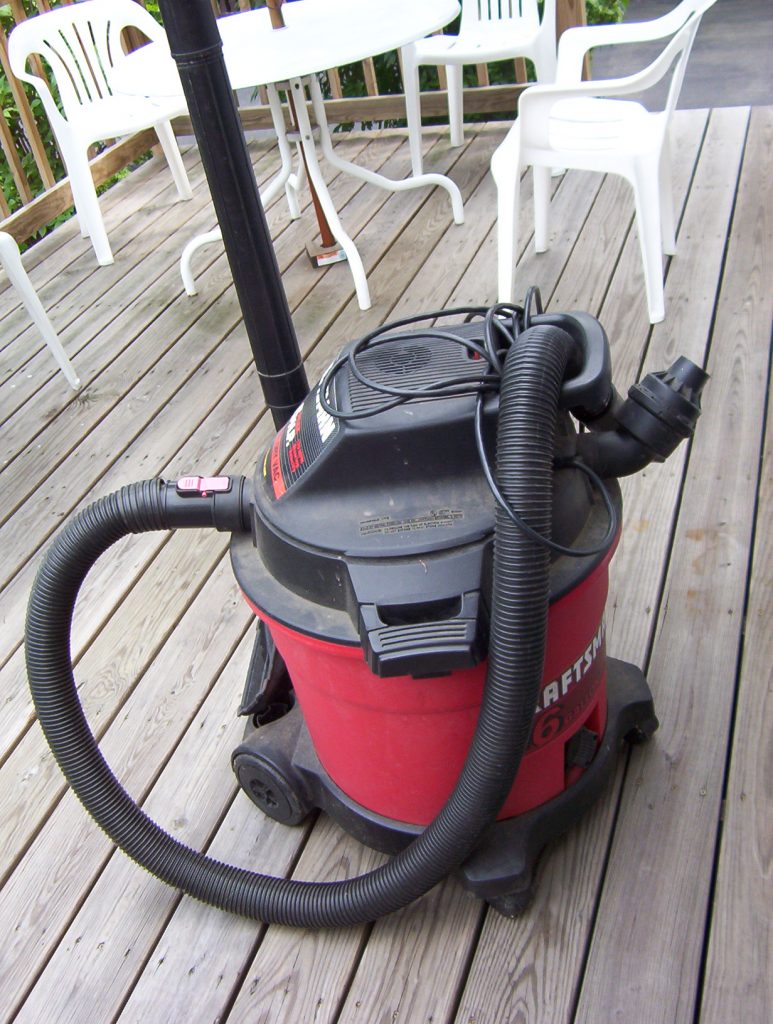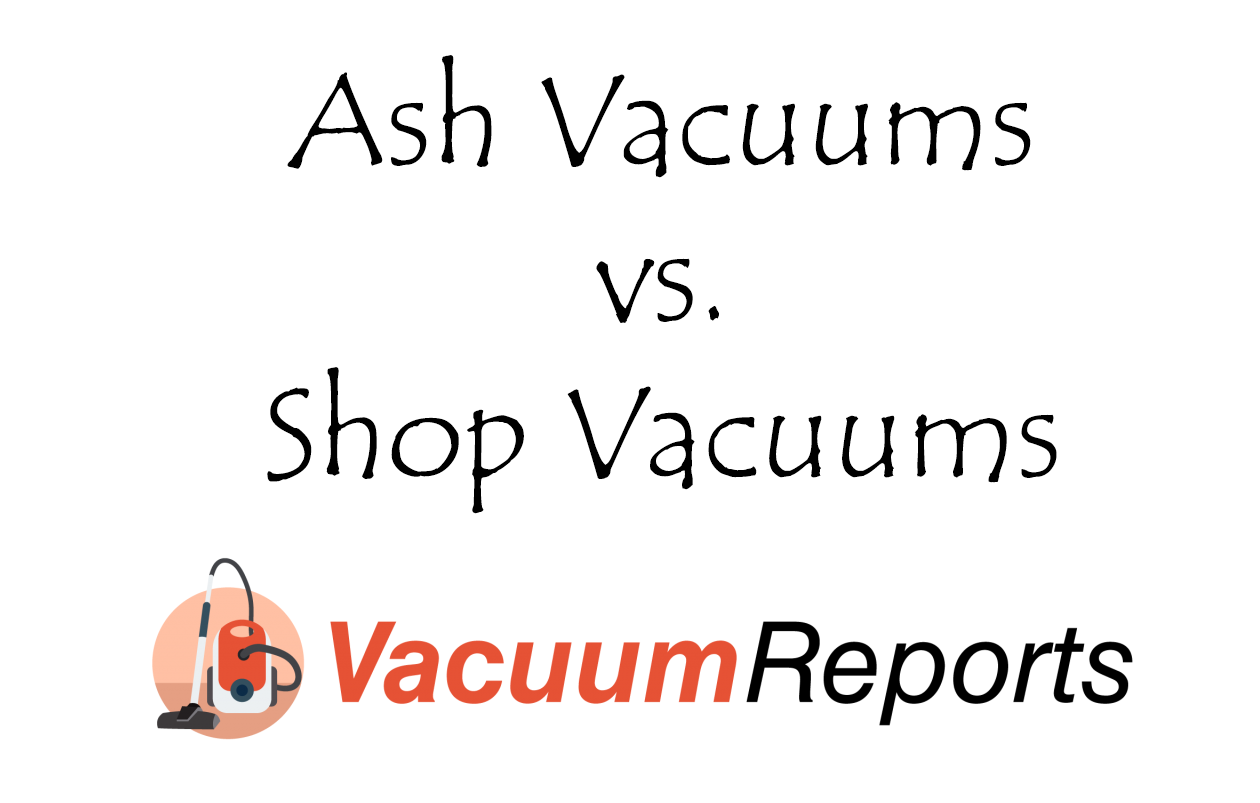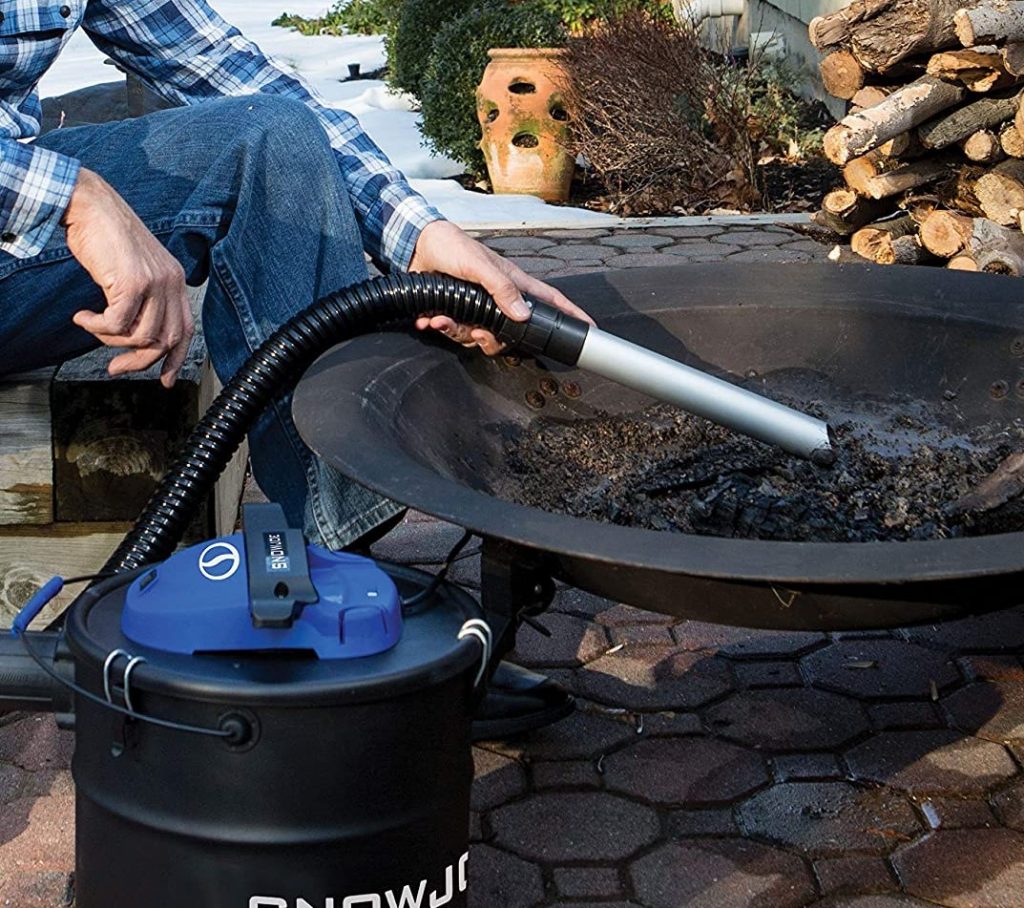Are you tired of choking on dust in the workshop? Are you sick of cleaning up the fireplace every morning? What if there was an easier way to get rid of the dust and ash, without sweeping up?
Ash and shop vacuums are interesting and useful tools that can help you clean up around the workshop and home. While they both serve the purpose of cleaning ash and dust, you might be wondering if you can use these appliances interchangeably.
Our ash vacuum vs shop vac comparison gives you everything you need to know about owning and using these appliances, which one is better for specific uses, and so on.
Ash Vacuum Vs Shop Vac – What’s the Difference?
What separates a shop vacuum from an ash vacuum?
Let’s unpack the specifics around these two different types of vacuums and why they are different machines used for different purposes.
Ash Vacuum Vs Shop Vac – What’s a Shop Vacuum?

If you’re sanding down that table in your workshop, tons of dust is flying through the air.
Breathing in fine particles isn’t good for your lungs, and you’ll end up with respiratory issues if you continue. Even the use of a respirator mask won’t block all the particles either.
A shop vacuum offers you an alternative cleaning system. There’s no need to stand around with a broom in your hands, sweeping the floors for hours. It’s a waste of time, inefficient, and you probably won’t even clean too well with just a broom and dustpan.
A shop vacuum comes with an industrial design suitable for use around the workshop.
The internals of the appliance feature construction with industrial components designed for heavy-duty use.
There are a few ways you can use a shop vacuum.
- The first is with a traditional style vacuum-cleaner setup. You push the vacuum around the workshop, letting it clean up the dust.
- The second option for a shop vacuum is to connect it directly to power tools like sanders. You operate the vacuum as you work with the sander, and it sucks away the debris without it ever entering the air. Shop vacuums are a must-have appliance for carpentry work, and they are handy tools for various other industrial cleaning tasks.
Shop Vacuum Vs Ash Vac – What’s an Ash Vacuum?
Are you planning on using your fireplace this winter? What do you do to clean up the ash the following day? Cleaning ash is a dirty job, and it’s easy to get things filthy when you’re clearing the fireplace.
An ash vacuum helps you do the job of clearing your fireplace in a fraction of the time. An ash vacuum provides a safe solution for vacuuming up hot ash from your fireplace. This vacuum features a design with premium, heat-resistant components to avoid anything catching fire or melting.
An ash vacuum is also capable of use around the home and the workshop. If you’re doing metalwork and need to hook up a shop vacuum, this model can take the hot spark without sustaining damage. Typically, ash vacuums can substitute for shop vacuums, and many manufacturers offer ash-proof design in shop vacs.
Ash Vacuum Vs Shop Vac – How Will You Use the Vacuum?
The vacuum’s utility is a concern when deciding on the right appliance for your workshop or home.
How do you plan on using your vacuum? Each machine has its limitations, and exceeding those limits results in the appliance’s malfunction and breakdown.
An ash vacuum has a purpose-built design for clearing ash and no other purpose.
Therefore, if you’re looking for a vacuum for your workshop, you need an appliance dedicated to the task.
A shop vacuum is your best choice, and it’s the best option for hobbyists and professional carpenters looking to keep the workshop clean.
Shop vacs have high-powered suction, with plenty of capacity. Ash vacuums don’t need that same level of strength. They don’t have the same hose lengths that require large motors. However, they do feature sealed and protected components that allow the appliance to handle hot ash.
Shop Vacuum Vs Ash Vac – Design and Structure
Shop vacuums and ash vacuums have entirely different shapes and designs.
Ash Vacuums
The structure of an ash vacuum has a specific design to handle hot materials. The vacuum features assembly with a heat-resistant hose to manage the temperature demands of hot ash and spark.
The durable rubber coating in the suction hose won’t melt, even at high temperatures. Yet, it still needs replacing – just about as often as a normal shop vac hose does. At the tip of the hose, you’ll find a metal nozzle on the ash vacuum. This temperature-resistant nozzle allows you to dip the tip into hot ash without melting or damaging it.
Ash vacuum internals can handle the high-temperature ash, without degrading or breaking.
Shop Vacuums
With a shop vac, you get a bulky and powerful machine. Typically, the body and tank on the shop vac are larger and capable of holding more volume. Shop vacs feature potent motors that can handle the demands of debris from power tools when operating at high speed.
The shop vac connects directly to your power tool housing, allowing for the effective cleaning of dust, sawdust, and debris, without ever entering the air around your workspace. With a shop vac, you get a convenient and hassle-free cleanup.
Shop vacs are available with different motor sizes and housing capacities. Choose a model that’s suitable for DIY or industrial use. Shop vacs are handy to have around home workshops and large industrial venues.
Ash Vacuum Vs Shop Vac – Do You Need an Air Filter?
The air filter is one of the most significant differences between an ash vacuum and a shop vac.
Ash vacuums have to suck up fine ash, which can get into the machine’s parts and components. As a result of ash residue and build-up, the machine eventually breaks down. Ash gets in bearings, in switches, and covers everything – it’s a mess.
It’s for this reason that ash vacuums feature an air filter. The filter prevents the ash from getting into the machine’s internals, protecting it from the build-up of dirt. The air filter also plays a secondary role. It protects the motor, fans, and electronics from melting under the heat.
Ash vacuums feature specialized air filters that safely clean up the ash, without creating a fire hazard.
Most, if not all shop vacuums also feature air filters. Some even have multiple layers of filtration.
Depending on the make and model, you’ll still likely choose one that has a filter of some sort, and HEPA filters are among the best filters.
They have design and construction to deal with anything in the air column. Using a shop vac with no filter is poor decision, as the air will blow everywhere, simply because…you guessed it…it has no filter! Plus, it’s also potentially dangerous.
The only time you should use a shop vac with no filter is if you’re vacuuming water or other very wet material.
If you use your shop vacuum with a filter when you’re sucking up water or other wet debris, you risk damaging or significantly impacting the lifespan and quality of the filter.
Regardless, shop vac filters are not suitable for cleaning up ash, and you should never use them for this purpose.
Shop Vacuum Vs Ash Vac – Dimensions and Size
Shop vacs are available in a range of sizes.
Some feature a portable design, while others are suitable for fixed operation.
Most shop vacs sit in a specific area of the workshop and connect to a long hose. The hose reaches every area of the workshop. It suspends from the roof, allowing for easy cleanup from any corner of the room.
To get suction power across a 15-foot room with a shop vac, you need some serious power.
That’s also why shop vacs are typically bulky vs ash vacuums.
Therefore, shop vacs come with powerful motors. These motors need large casings with plenty of room for fans to cool down the components during operation. That’s also why they’re so loud!
Shop vacs can run for long periods, and they need top-quality industrial components that stand up to demanding use around the workshop. Therefore, shop vacs are typically large, fixed machines.
On the other hand, ash vacuums typically have a portable design. It’s easier to move them around the yard or the home, and they have more resemblance to a normal home vacuum cleaner vs a shop vac.
Shop Vacuum Vs Ash Vac – Price Ranges
When deciding on an appliance, the price tag is always a critical factor for settling on the right model.
Since a shop vac and ash vac are two entirely different appliances, you can expect differences in the price tag.
An ash vacuum is an expensive machine, especially for a premium brand.
With shop vacuums, you’ll typically end up paying more vs an ash vacuum.
Depending on the model, you could end up shelling out more than $1,000 for a professional model. However, not everyone has that kind of money around, and there are both shop vacuums and ash vacuums that are under $100 that offer reasonable performance.
Want a powerful, premium, well-built shop vac or ash vacuum? You’re going to have to pay more.
However, shop vacuums come with a top-quality industrial design, providing a long service life.
Shop vacs also require fitment around the workshop using an extension and swing arms. Some models include these accessories, while others require you to buy them aftermarket or build them yourself.
Ash Vacuum Vs Shop Vac – The Verdict
In closing, we want to reiterate that a shop vac and an ash vac are totally different machines.
You can use these appliances interchangeably for specific goals or reasons in mind.
If you try to suck ash up with a shop vac, it will end in disaster. Using an ash vac to clean up sawdust will work, but what’s the point?
Choose the vacuum that suits your needs.
If you need something to clean up the ash in the grill after a family BBQ or clear the fireplace after a brutal winter morning, an ash vac is the best option.
However, if you own a workshop and need to clear debris from your power tools, or work with wood and other materials on a regular basis, a shop vac is the better choice.

